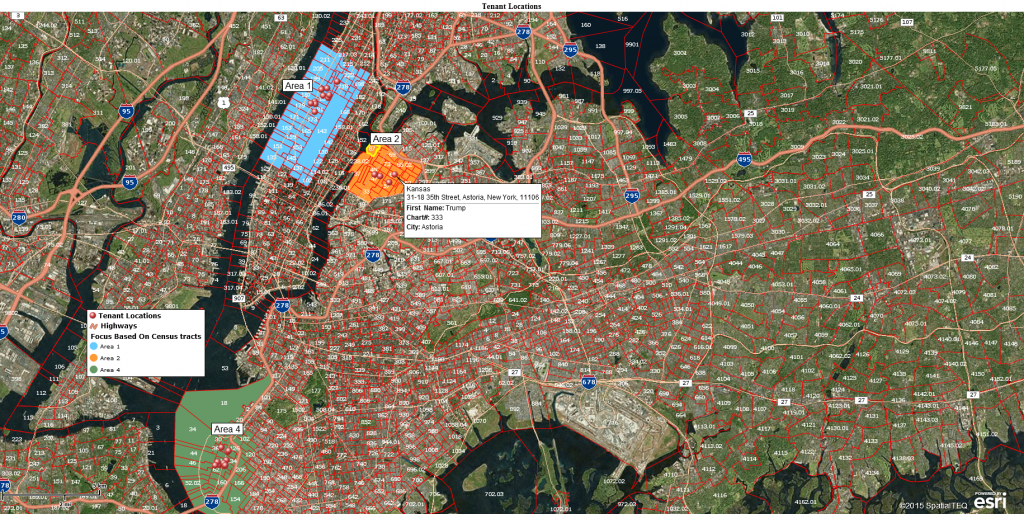We talk a lot about how to set up sales territory maps, customer visualizations and market analysis maps, but we haven’t dwelled long enough on the conclusions a user might draw from their specific map analysis. The short answer is many. A lot depends upon what your business is all about.
Sales Conclusions
A common application of Map Business Online and business mapping is supporting sales operations. These sales maps are going to include imported sales records by customer or by ZIP code largely to view where sales are occurring. By setting up such a sales map and including relevant Demographic data to augment your analysis, the map viewer will begin to conclude certain facts about their sales coverage area:
- Sales occur in certain areas and do not occur in other areas. A basic realization about where sales occur and where they do not occur has immediate implications for any sales team:
- Where more selling effort must be expended due to lack of sales
- An understanding of why sales occur in key areas
- Why and how workloads should be balanced
Adding multiple layers of demographic information can be useful for further conclusions such as establishing a ZIP code or County profile for a successful sales area. A best ZIP code profile will help identity the most fertile zones for potential new business in other parts of the nation. The business map indicates where sales occur, the demographic layer will help identify why sales occur.
Include a data layer that depicts sales coverage, either by sales rep home addresses or by creating accurate sales territories. By depicting coverage businesses can identify sales approaches that work. This analysis can be as simple or as complex as you need it to be. If your business sells a B2B manufactured product by outside sales rep, through face-to-face visits, then a map of sales rep locations and coverage areas may tell all. Consumer product sales, on the other hand, can be related to a variety of factors including specific climate, local ethnicities, even extremely local factors like the number of hunting licenses issued each year per county. Through the application of business mapping analysis organizations learn what works across their coverage areas.
We’ve seen sales organizations in insurance, chemical manufacturing, paper production, ATM machines, and private education all benefit from the conclusions they’ve drawn from business mapping analysis. The list goes on.
Marketing to Test Results
Conclusions drawn from marketing analysis maps might include marketing campaign segmentation results. A new list of prospects, being tested in a specific area, can be compared to other sections of the country based on demographic makeup. Tests might be conducted through direct mail campaigns to densely populated counties in three western states. Tested counties can be examined and profiled based on:
- Age breakdowns in population make-up
- Income brackets as a percentage of the total population
- Consumer expenditure levels for specific types of purchases across counties or zip codes
An analysis may reveal surprising results connecting demographic patterns with ad response patterns. Based on this data, direct mail investments can be tailored towards specific populations or certain geographic areas, linking anticipated consumer reactions to campaign spending allowances. Thus, test results can help inform decisions around direct mail activity, increasing sales while minimizing campaign costs.
Our business mapping services have informed marketing decisions at companies in subscription management, bill board marketing, national sports network television advertising, healthcare marketing, dentistry and steel equipment manufacturing. You name it.
Operational Conclusions
Business and non-profit operations in general could stand some map analysis too. It’s not always about sales and marketing. Operational conclusions can improve productivity informing decisions around managed growth.
Operational map visualizations could apply to donor solicitation, field machine repair, or even landscaping decisions. Business maps provide assessments of how you conduct business today and how it might be conducted better next year.
A map outlining all work locations by address, date, and start/finish time establishes a baseline of how jobs are handled over a specific period. By considering actual job locations and their proximity to assigned worker home locations, a manger can begin to consider operational perspectives that might include:
- Color-coded job location points based on job type, average job times, or average job costs
- Commute time to job locations and how this can impact worker satisfaction
- Better workload balancing
- Customer satisfaction surveys
Conclusions from operational analysis will inform decisions around business expansion, business mergers, or seasonal hiring. Today the federal government is making decisions that may impact certain business’ ability to staff for seasonal requirements. A business map can help your business get organized, to visualize where your next seasonal help shift might come from based on population concentrations.
Use business maps to answer your business questions. It’s another arrow in your quiver as you and your business move into an always uncertain future.
Map Business Online – Easy, affordable, advanced and we’ll help.
Find out why over 25,000 business users log into www.MapBusinessOnline.com
Contact: Geoffrey Ives geoffives@spatialteq.com or Jason Henderson jhenderson@spatialteq.com (800) 425-9035
MapPoint users – please consider www.MapBusinessOnline.com as your MapPoint Replacement.
Please read customer reviews or review us at Capterra, or at the Salesforce.com AppExchange.

